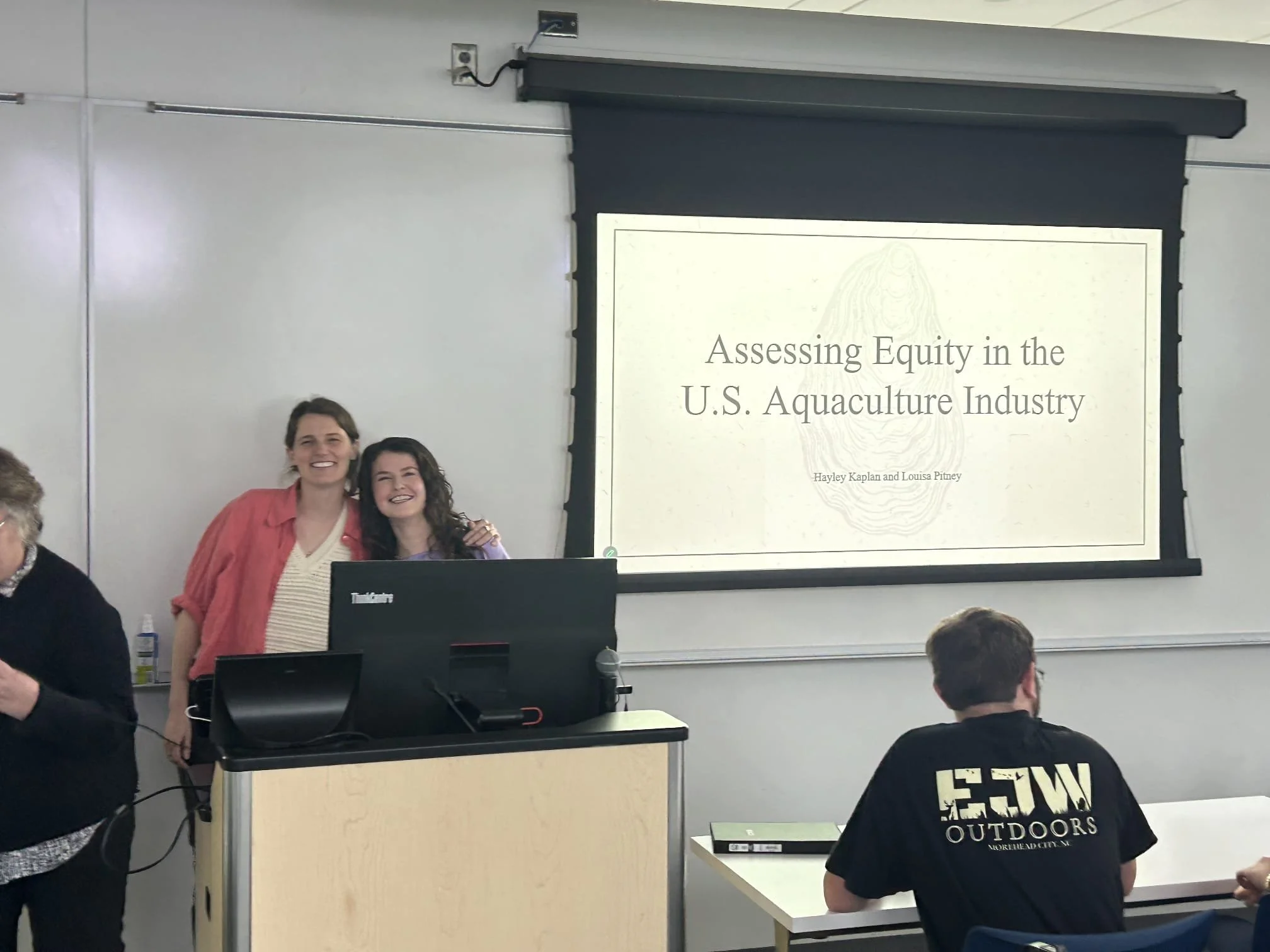Example of floating cage oyster culture at the Duke University Oyster Farm in Carteret County, North Carolina. The introduction of floating cages has helped increase productivity in oyster farming, but the visibility of the gear and occupation of surface waters have also brought conflict with community members concerned about their viewshed or water activities. (Photo: L. Pitney)
Left: Master’s students Louisa Pitney (‘25) and Hayley Kaplan (‘25) present the results of their research focusing on data collection and common barriers and opportunities faced by underrepresented groups. (Photo: J. Zwissler)
Project team
Grant Murray, Duke Marine Lab (PI)
Lisa Campbell, Duke Marine Lab (Co-PI)
Elizabeth Albright, Nicholas School of the Environment, Duke University (Co-PI)
Norbert Wilson, Duke School of Divinity (Co-PI)
Louisa Pitney, Duke Marine Lab (Research Tech)
Hayley Kaplan, Duke Marine Lab (Master’s Student)
Project supported by the Duke Climate Research Innovation Seed Program (CRISP) and the North Carolina Collaboratory.
Assessing Equity in the Shellfish Aquaculture Industry
Shellfish aquaculture—the cultivation of bivalves such as oysters, clams, and mussels— is widely positioned as an environmentally sustainable practice with the potential to provide local jobs, domestic sources of seafood, and maritime heritage. However, its reliance on the enclosure and de facto privatization of public waters raises critical questions about the distribution of benefits. The overall goal of this study is to understand the distribution of benefits as the sector expands. We pay particular attention to questions around the demographic profile of the industry, the degree of ‘local’ ownership, and the nature of concentration in the industry. This research examines the following questions:
Are coastal states collecting and making available data about shellfish aquaculture lease, license, and permit holders that allow for assessment of distributional equity?
What statutes and regulations shape lease distribution with regard to demographics, spatial concentration, and geographic adjacency, or ‘localness’?
What can we say about the demographic, spatial concentration, and localness breakdown of shellfish aquaculture lease and licenseholders in coastal states?
What are the common barriers and opportunities faced by groups underrepresented among shellfish lease and licenseholders?
We explore these factors through a mixed methods approach that includes a review of public documents and interviews with state managers, Sea Grant extension agents, shellfish growers, and NGOs.
We’d like to hear from you!
For more information or to get involved, contact Grant Murray (grant.murray@duke.edu) at the Duke University Marine Lab.
We want to understand:
What are the common barriers and opportunities faced by underrepresented groups in the shellfish aquaculture industry?
What is the state of small-scale, local shellfish farming, and how might we support it?
We want to work with:
Shellfish Farmers (active and aspiring)
State managers & Sea Grant extension agents
Community Leaders and Organizations
Other Stakeholders


